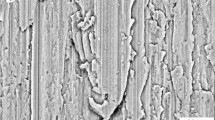Abstract
Following the absorption of inclusions, alterations occur in the microstructure of the tundish flux, thereby affecting its performance and diminishing the quality of continuous casting blanks. In this study, molecular dynamics simulations were employed to analyze the influence of varying levels of absorbed inclusions on the flux microstructure. The results indicate that the flux continuously absorbs inclusions, such as Al2O3 and SiO2, during the continuous casting process, leading to an increase in the degree of microstructural polymerization. In the later stages of continuous casting, the proportion of bridging oxygen and tricluster oxygen in the tundish flux increased by 3.7% and 5.1%, respectively, while the average bond length of Al-O increased by 0.033 Å. The complexity of the microstructure leads to the deterioration of the physical and chemical properties of the coating, such as melting point and viscosity, and further reduces its ability to absorb inclusions.
Access this chapter
Tax calculation will be finalised at checkout
Purchases are for personal use only
Similar content being viewed by others
References
Wei Z, Ruimin WU, Wang Y (2019) Robotic system for adding tundish-covering flux based on machine vision. Baosteel Tech Res 13(03):37–42
Li JL, Shu QF, Liu YA (2014) Dissolution rate of Al2O3 into molten CaO–Al2O3–CaF2 flux. Ironmaking Steelmaking 41(10):732–740
Yuan Z, Yan WU, Zhao H (2013) Wettability between Molten slag and MgO-C refractories for the slag splashing process. ISIJ Int 53(4):598–602
Zheng K, Liao J, Wang X (2013) Raman spectroscopic study of the structural properties of CaO-MgO-SiO2-TiO2 slags. J Non-Cryst Solids 376
Wu T, Wang Q, Yu C, He S (2016) Structural and viscosity properties of CaO-SiO2-Al2O3-FeO slags based on molecular dynamic simulation. J Non-Cryst Solids 450:23–31
Gao J, Wen G, Huang T, Tang P, Liu Q (2016) Effects of the composition on the structure and viscosity of the CaO-SiO2-based mold flux. J Non-Cryst Solids 435
Chen Z, Wang H, Sun Y (2019) Insight into the relationship between viscosity and structure of CaO-SiO2-MgO-Al2O3 Molten slags. Metall Mater Trans B 50(6)
Fan G, Diao J, Jiang L, Zhang Z, Xie B (2015) Molecular dynamics analysis of the microstructure of the CaO-P2O5-SiO2 slag system with varying P2O5/SiO2 ratios. Mater Trans 56:655–660
Diao J, Fan G, Liu X, Xie B (2014) Computer simulation of anionic structures of Molten CaO-SiO2-P2O5 system. Metall Mater Trans 45B(5):1942–1947
Fan G, He S, Wu T (2015) Effect of Fluorine on the structure of high Al2O3-bearing system by molecular dynamics simulation. Metall Mater Trans B 46(4):2005–2013
Wang Z, Sun Y, Sridhar S, Zhang M, Guo M, Zhang Z (2015) Effect of Al2O3 on the viscosity and structure of CaO-SiO2-MgO-Al2O3-FetO slags. Metall Mater Trans 46B(2):537–541
Liu Y, Bai C, Lv X (2015) Molecular dynamics simulation on the influence of Al2O3 on the slag structure at 1873 K. Mater Today Proceedings 2:453–459
Liu Y, Xuewei LV, Bai C (2014) Density of the blast furnace slag bearing TiO2 at 1673 K. ISIJ Int 54(9):2017–2024
Shimoda K, Saito K (2007) Detailed structure elucidation of the blast furnace slag by molecular dynamics simulation. ISIJ Int 47(9):1275–1279
Mills KC, Sridhar S (1999) Viscosities of ironmaking and steelmaking slags. Ironmaking Steelmaking 26(4):262–268
Acknowledgements
The authors gratefully acknowledge the financial support provided by the National Natural Science Foundation of China, project No. 51874059, 52074053, 52274320 and 52274321.
Author information
Authors and Affiliations
Corresponding author
Editor information
Editors and Affiliations
Rights and permissions
Copyright information
© 2024 The Minerals, Metals & Materials Society
About this paper
Cite this paper
Hu, H. et al. (2024). Evolution of the Tundish Flux Microstructure During Continuous Casting Process: A Molecular Dynamics Simulation Study. In: Wagstaff, S., Anderson, A., Sabau, A.S., Iloeje, C. (eds) Materials Processing Fundamentals 2024. TMS 2024. The Minerals, Metals & Materials Series. Springer, Cham. https://doi.org/10.1007/978-3-031-50184-5_4
Download citation
DOI: https://doi.org/10.1007/978-3-031-50184-5_4
Published:
Publisher Name: Springer, Cham
Print ISBN: 978-3-031-50183-8
Online ISBN: 978-3-031-50184-5
eBook Packages: Chemistry and Materials ScienceChemistry and Material Science (R0)




